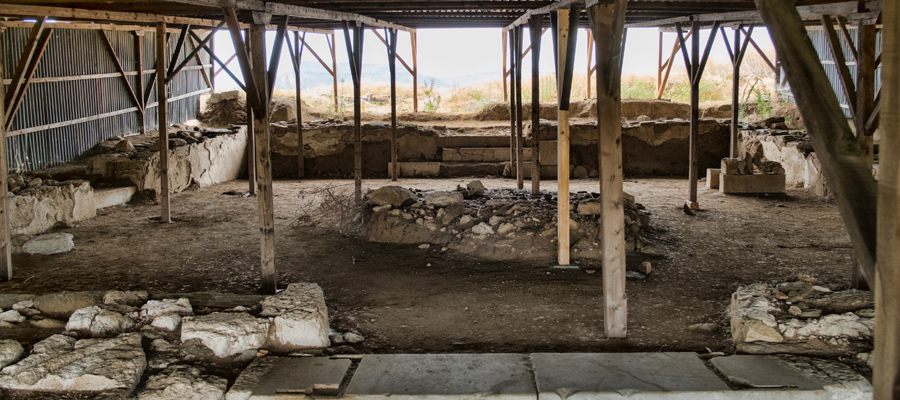Antiquities of Ouranopolis
Important antiquities have been discovered in the wider area of Ouranoupoli. A tomb of Roman era was discovered in the position Kokkinocharafo, approximately 1km east of the village. It is on a low hill, near the road that leads to Zygou monastery and the borderline of Mount Athos. The discovery was made in a private property during flattening operations. The finding might not initially impress but it provides a new element of an archaeologically undiscovered area, which is known to be highly populated during the ancient period.
The tomb is built, box shaped, oriented parallel to the coastline. The walls were casually built with rough (unprocessed) stones and a yellow colored clay as a bonding material. The floor is dirt and the deceased was placed directly on the dirt in a lying position. The only funeral gifts found was a copper coin on the body’s chest and a clay oil lamp beside his left foot. The finding is dated in 3rd century B.C. A short pile of stones was on top of the tomb. Interestingly, similar piles existing in several places in the nearby area indicate the probable existence of a cemetery. There is a water bridge and a gallery with a water plumbing system of the post-byzantine period, located to the north close to the previously mentioned location, as well as other projects that seem to belong to the general water supply system of the area.
Info
In 1959, in a higher altitude, in a private property located in Kokkinara position, the curator Manolis Andronikos had researched the remains of an important Hellenistic building, after the discovery of marble structures, ancient artifacts such as clay oil lamps, copper coins and lead plates by the owner. It was probably a small scale research and stopped prematurely.






